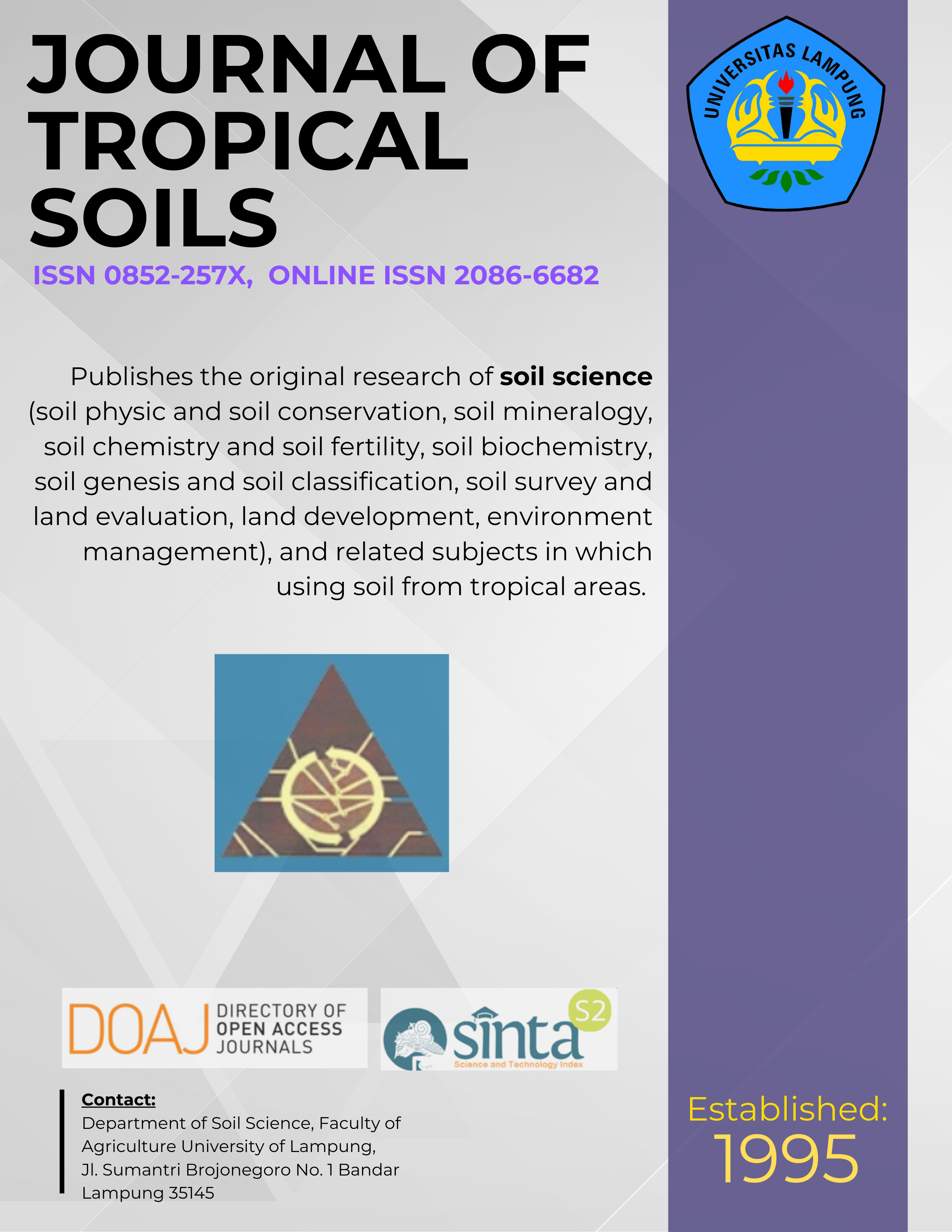Physical Properties of Soils from Several Land Uses in a Tidal Swampland Area Applied with a Fork Irrigation System
Main Article Content
Abstract
In Indonesia, tidal swampland is potential to be developed into agricultural land uses. Water management is the key success of farming on the tidal swampland. In the tidal swampland of Kalimantan, Indonesia, a fork irrigation system is widely applied in the water channels to supply irrigation water to the land. Besides irrigation, soil physical characteristics play an important role in controlling water availability for crops. The ability of soil to store water will determine the amount of available water that can be taken up by plants. This research aimed to determine the soil physical properties that are related to water availability in the soils from different land uses in a tidal swamp land area applied with a fork irrigation system. The experiment was conducted in dry season 2012, in Belawang, Barito Kuala district, South Kalimantan province. The soil samples were taken from four land uses, namely rice field, rubber plantation, mixed cropping, and unmanaged land. The soil physical properties, namely soil bulk density, particle density, porosity, texture, pF 1, pF 2, pF 2.54, pF 4, water content, total pore space, rapid drainage pores, slow drainage pores, available water, groundwater level were measured. In addition, the mineralogical properties of the soils were measured as well. The results showed that the physical properties of the soils taken from different land use varied, however, the change of the land use did not cause changes in the soil mineralogical properties. The mineralogy of the soils from different land uses are relatively the same, namely: quartz, illite, and chlorite.
Downloads
Article Details
License for Authors
Authors who publish with this journal agree to the following terms:
- Authors retain copyright and grant the journal right of first publication with the work simultaneously licensed under a Creative Commons Attribution License that allows others to share the work with an acknowledgement of the work's authorship and initial publication in this journal.
- Authors are able to enter into separate, additional contractual arrangements for the non-exclusive distribution of the journal's published version of the work (e.g., post it to an institutional repository or publish it in a book), with an acknowledgement of its initial publication in this journal.
- Authors are permitted and encouraged to post their work online (e.g., in institutional repositories or on their website) prior to and during the submission process, as it can lead to productive exchanges, as well as earlier and greater citation of published work (See The Effect of Open Access).
License for Regular Users
Other regular users who want to cite, distribute, remix, tweak, and build upon author’s works, even for commercial purposes, should acknowledge the work’s authorship and initial publication in this journal, licensed under a Creative Commons Attribution License.

